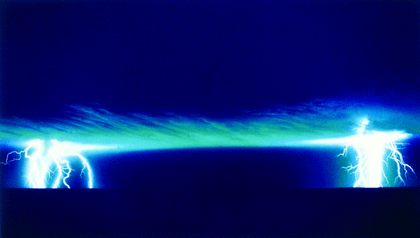A retrospective on the late Jack Goldstein, the artist, filmmaker and performance producer
With growing evidence that the high-minded art critic press is perplexed and dissatisfied about how we got to the current state of affairs, particularly in painting, some galleries and institutions have mounted retro, “we knew all along” survey shows of artists who are at the root of the confusion.
This month, the work of Jack Goldstein is being re-examined in gallery shows and symposia. Currently, there are shows in New York at Mitchell-Innes & Nash and at Metro Pictures and a kind of film retrospective at Harvard.
Jack Goldstein, who committed suicide in 2003, was a product and part of the heady theory-driven, semi-conceptual movement that came out of the famous Cal Arts school in the ‘80s. The hallmark of his work are media-oriented, bluntly appropriated imagery, high contrast and photographic color that has a commercial media look, mechanical processes and incisive, phenomenological subject matter. Goldstein made paintings, photographs, films, recordings and performance pieces.
The show at Metro Pictures is ten paintings done from 1980 through 1985. The most engaging are of anomalous weather phenomena such as a panoramic view of lightning striking twice in the same landscape at night. Lightning is the image in several other paintings. There are also paintings of missile firings and bombings, also seen as light in a dark landscape.
Goldstein was in no way interested in evidence of his act of painting but rather in the impact of the image itself. In fact, the paintings were typically farmed out, meaning that assistants almost always painted them just as the work in the recent Damian Hirst show was painted by assistants. Goldstein’s assistant is said to have often been Ashley Bickerton, who after first exploring Neo-geo art on the road became a rather compulsive painter of his own work.
The surface of the Goldsteins is near flawless, utilizing all manner of commercial techniques including stencil and airbrush. In spite of Goldstein’s professed lack of interest in the historical aspects of painting, many of these works make use of the formal conventions of post-painterly abstraction. Bands of color at the bottom edge, and an all-over paint handling and compositional formatting belie his “not about art” stance. The paintings are striking, even good-looking. In fact they are even corporate headquarters-ready.
Yesterday’s avant-garde is today’s academy. Today’s Dana Schutz is tomorrow’s Thomas Hart Benton.
gaycitynews.com



































